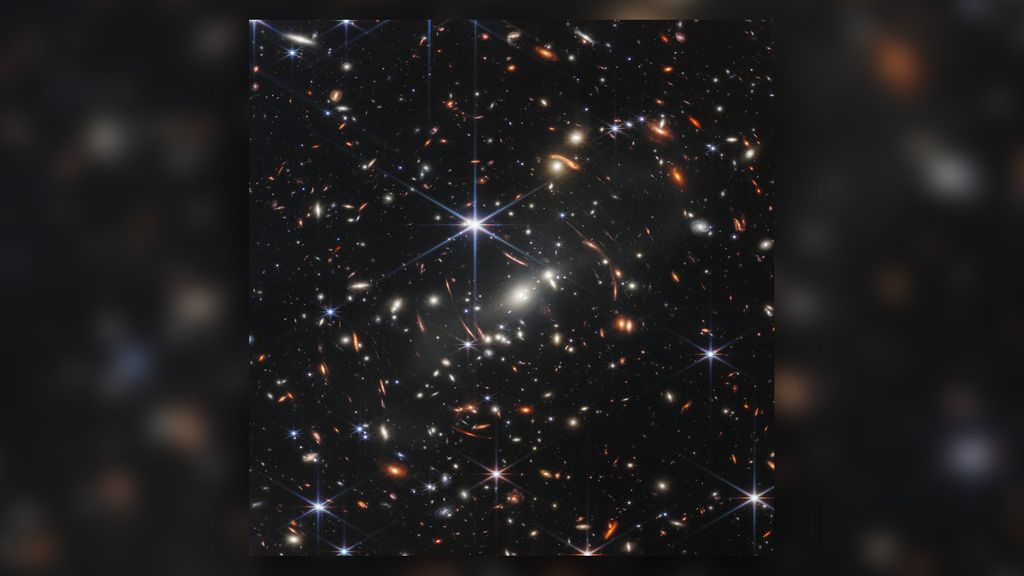Science
Related: About this forumIt's beautiful. Hundreds of galaxies, up to 13.5 billion years old

Zoom in. Many of those "stars" are actually galaxies
ZZenith
(4,321 posts)Is this an early release?
Twoflower
(1,027 posts)FloridaBlues
(4,367 posts)Think it will be released tomorrow?
krispos42
(49,445 posts)Sorry, got lost in the moment ![]()
Response to krispos42 (Original post)
ZZenith This message was self-deleted by its author.
PJMcK
(22,886 posts)All of those blotches of light are galaxies. The individual stars are just too far away for even the JWST to resolve. Still, it's a magnificent photo that is even more intense than the Hubble Deep Field pictures.
This telescope images primarily in the infra-red bands of light because light "red shifts" as the universe expands away from us. So the picture is actually false coloring compared to the raw data from the telescope. Still, I'm sure that the technicians have modified the colors in an accurate manner.
At the center of this picture are two white splotches; around them are semi-circles of orange lights. Those are probably multiple images of a galaxy many millions or billions of light years further away behind the two white splotches. The galaxy cluster in the middle is acting as a lens so we can see the galaxy that is further away. It's kind of like the multiple images you see when you look through a cut glass wine goblet. Interestingly, Einstein predicted this cosmic lensing but didn't think we'd ever see it!
I can't wait to see the full set of pictures. This telescope, like many others, will reveal many secrets of the universe. Those discoveries will raise a ton of more questions and mysteries. Ain't Science great?!
Response to PJMcK (Reply #5)
CloudWatcher This message was self-deleted by its author.
SCantiGOP
(14,239 posts)I heard it from Carl Sagan, but don’t know if it was original with him:
The universe is not just stranger than we imagine, it is stranger than we can imagine.
Judi Lynn
(162,385 posts)
This is the most detailed image of the universe ever captured.
The first full-color image from the James Webb Space Telescope has been unveiled by NASA and President Joe Biden, and it's the deepest and and most detailed image of the universe to ever be captured.
Named "Webb's First Deep Field," the spectacular and mind-bending photo shows our universe only a few hundred million years after the Big Bang, just as galaxies began to form and light started flickering from the very first stars. This starlight took roughly 13.5 billion years — or most of the age of the universe — to travel to us, arriving at the James Webb Space Telescope (JWST) after the space-time warping gravitational pull of the galaxy cluster SMACS 0723 steered even the fainter and more distant light into focus.
"We're going back 13.5 billion years," NASA administrator Bill Nelson said at the press conference(opens in new tab). "And since we know the universe is 13.8 billion years old, we're going back almost to the beginning." Nelson added that the telescope "is going to be so precise you are going to see whether or not planets are habitable," and that its unprecedented views of the universe would enable scientists to find answers to questions that haven't even been asked yet.
Remarkably, despite the overwhelming density and the quickly exponential number of galaxies, stars, and planets contained within the image, Nelson explained it was just the tiniest slice of the night sky.
More:
https://www.livescience.com/first-james-webb-image
Thanks to krispos42 for the beautiful image. ⭐️
cstanleytech
(27,009 posts)surpasses our own.